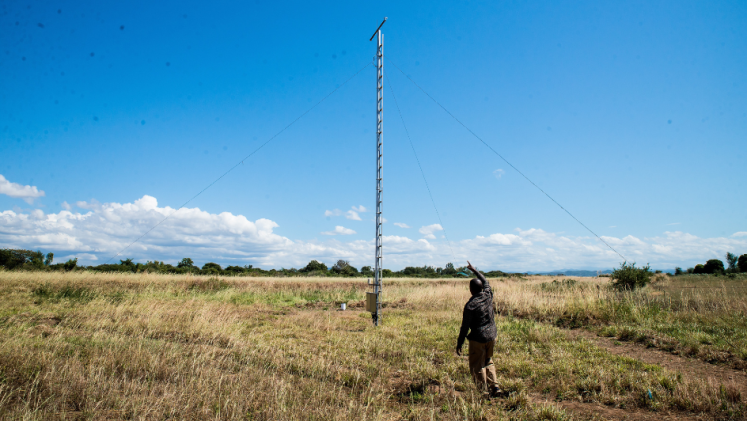Climate-related extreme events, such as floods, storms or droughts, are becoming more frequent and intense, making innovative ways to protect vulnerable communities essential. Artificial intelligence (AI) holds great promise in enhancing early warning systems (EWS), particularly the shift from hazard-based to so-called impact-based early warning systems, which go beyond predicting what the weather will be towards what the weather will do. Yet, integrating AI into these systems also presents challenges. Based on insights from the Bonn AI and Climate Expert Meeting, here are five ways AI can help improve EWS and the challenges that arise.
AI can help advance disaster risk knowledge
AI can play a crucial role in gathering and analysing vulnerability and exposure data — critical elements in enhancing disaster risk knowledge for EWS. It can, for instance, help to identify which settlements are most likely to be affected when a storm hits. This kind of information can significantly enhance disaster risk knowledge for EWS, particularly in data-scarce regions. However, AI models can misinterpret vulnerability and exposure data or overlook critical case-specific nuances, such as marginalized groups. In the context of EWS, this can lead to devastating consequences with inappropriate emergency responses. Therefore, using AI only as a complementary tool for gathering insights from those who are most at risk in local communities is critical to ensure that the innovation is people-centred and equitable.
AI can speed up hazard detection and monitoring
AI has the potential to enhance EWS by advancing predictive analytics and real-time data assessments. For example, AI has already been introduced in platforms that consolidate and disseminate severe weather information, such as the World Meteorological Organization's Severe Weather Information Center 3.0 (SWIC 3.0). However, AI-driven services require substantial resources that are particularly missing in data-scarce regions. Heavy investments into AI models for hazard detection and monitoring might not be possible and maintainable with the available resources of regions and governments.
AI can speed up warning delivery and improve communication and dissemination
Effective communication of early warnings is crucial to saving lives and facilitate early action. AI can optimize how alerts are disseminated. For example, in South Asia AI is used to tailor messages through various channels, ensuring warnings reach the right people. AI can also translate warnings into multiple languages and customize alerts to facilitate actionable warnings. Despite these advances, building trust in AI-generated warnings is still a challenge. False alarms or incorrect data can erode confidence, making it harder to encourage timely action. Human oversight and validation of AI-driven alerts are necessary to maintain trust.
AI can boost disaster response through real-time simulations
AI's ability to simulate different emergency scenarios offers valuable insights for preparedness and response. By simulating various disaster situations, AI can support humanitarian organizations and governments to prepare for different scenarios, refine contingency plans and allocate resources more effectively through real-time assessments. A danger of AI-supported EWS is to leave the receivers of warning messages and local actors behind if tools are not co-designed.
Ethical use of AI is key to fair and inclusive early warnings
While AI has great potential for improving EWS, it is not a silver bullet. The technology must be implemented thoughtfully and ethically. As AI heavily draws on existing data and knowledge, it might offer differential benefits for data-rich vs data-scarce environments. Addressing the digital divide is crucial, as those without access to the necessary technology may be left behind. AI models should not perpetuate existing biases or create new ones, such as underrepresenting certain communities in the data used to train these systems. To achieve this, guidelines and frameworks for ethical use of AI in EWS need to be established and followed. Transparent algorithms, accountability measures and bias mitigation strategies are essential to ensure an ethical application in context of early warning. Furthermore, fostering collaboration between AI experts, humanitarian actors and communities can help ensure that AI is used responsibly and effectively in the context of EWS.




